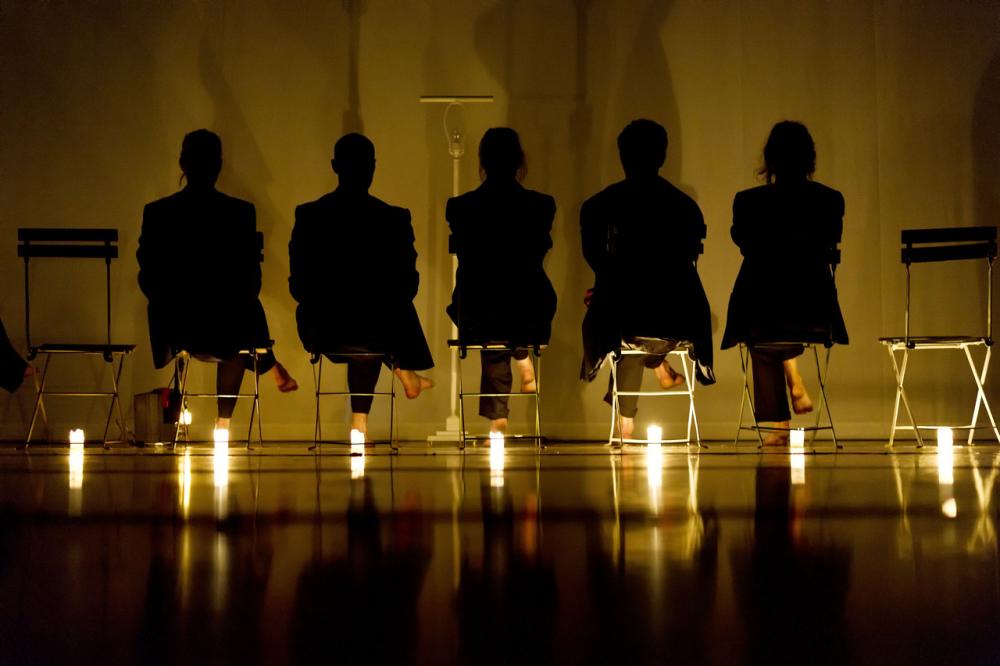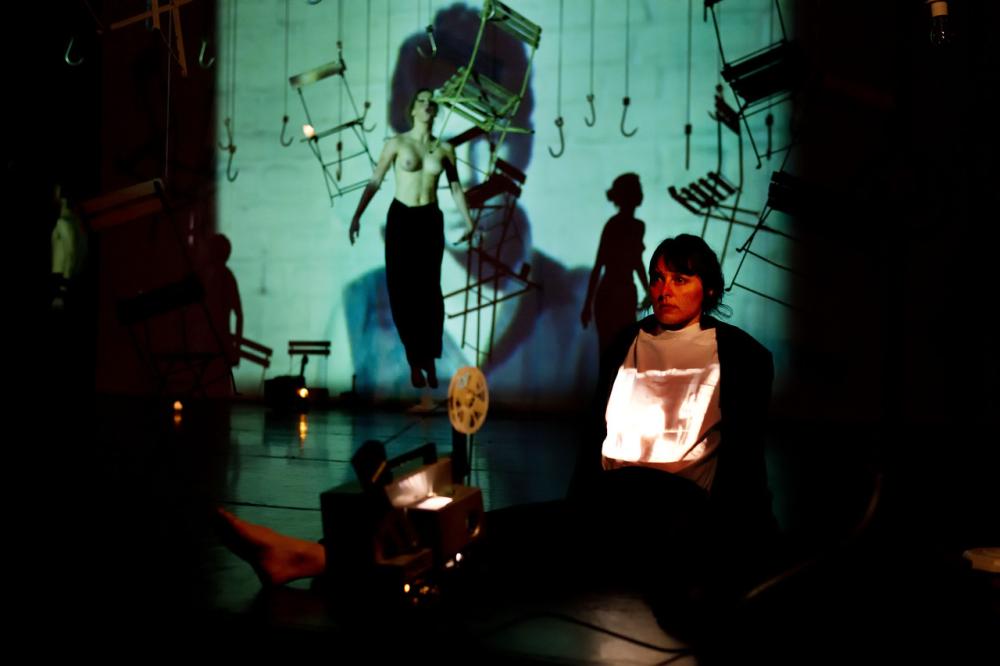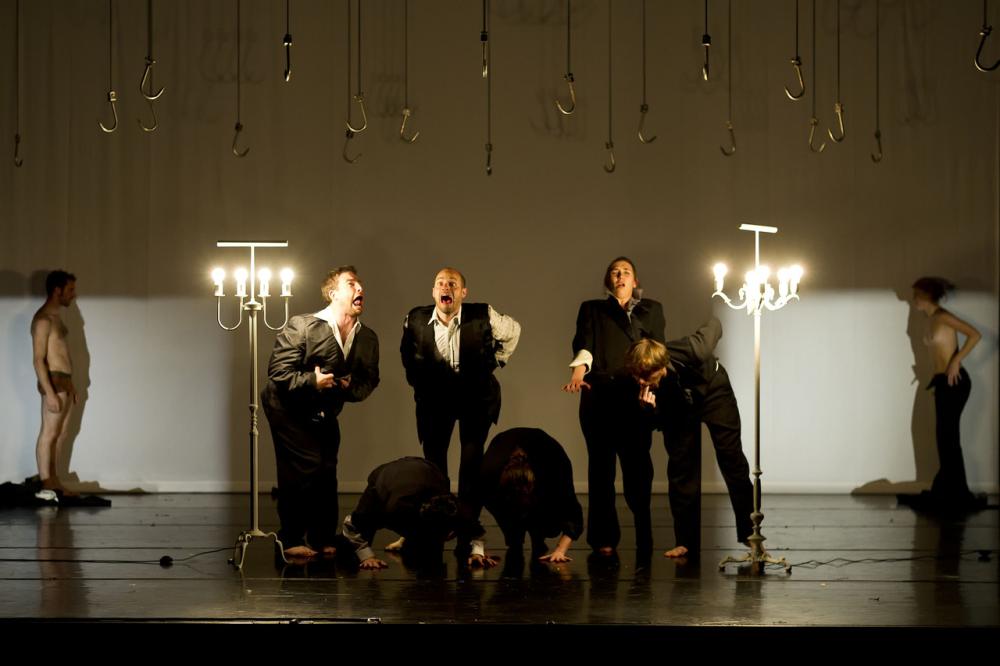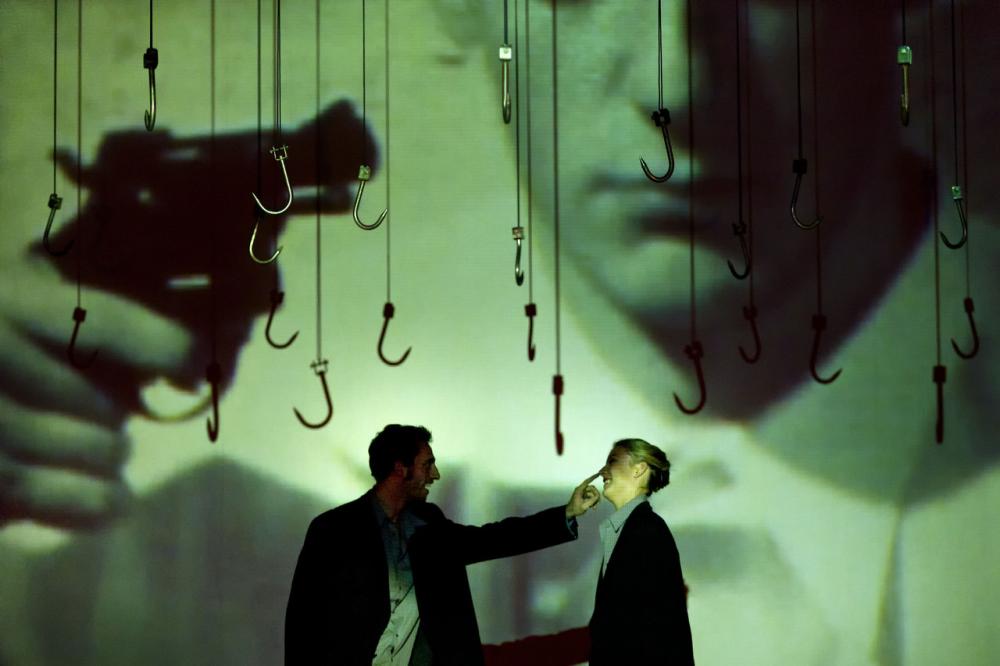This is theatre like it was to be expected and foreseen
This is theatre like it was to be expected and foreseen
With already several exhibitions and performances to his name, in 1982 the artist Jan Fabre (1958) ventured to create his first theatre performance. His choice of principles was immediately very radical. The show lasted eight hours, the length of a typical working day. The audience was free to leave at any time (for something to drink or a bite to eat) and then return to their places in the theatre.
Most of the actions in this highly visual presentation were endlessly repeated, the little text included was spoken in four languages by the eight young performers, so you heard each sentence at least four times. This playing with time (duration, repetition) alone forced the spectator to behave in a way that was different to what he might normally expect or foresee in the theatre. Boredom and exhaustion took their toll not only on stage but also among the audience: this was also Fabre’s most radical choice, a choice for the ‘real’ rather than for fiction, the illusion or the lie that we normally expect to see on a stage. The fatigue, aggression or anger that the repetition of actions for hours on end produced in the performers was the result of true exhaustion and real frustration.
In the rerun of this performance it will be interesting to observe whether such phenomena as duration or repetition, which in the meantime we have become familiar with on the stage, have retained their power. It may be equally interesting to discover that we now view this same performance with new eyes and that it generates very different feelings and reactions.
In 2012 it will be thirty years since the theatre-maker and artist Jan Fabre made his quite remarkable entrance into Flemish theatre history with his eight-hour show This is theatre like it was to be expected and foreseen. Two years later he conquered international stages with The power of theatrical madness. To celebrate this anniversary there will be a rerun of both productions with a completely new cast.
'A tremendous strike force.' ***** - De Morgen (2012)
'Very beautiful. Extremely powerful. Fabre succeeds in the miracle of stretching time'’ - La Libre Belgique (2012)
Watch images from the 1982 performance here.
credits original production: concept, direction Jan Fabre | choreography Jan Fabre, Marc Vanrunxt | music Guy Drieghe – D | assistant Christ Mahy | original cast Els Deceukelier, Danny Kenis, Dominique Krut, Erik Raeves, Marc Van Overmeir, Philippe Vansweevelt, Paul Vervoort, Rena Vets | costumes Pol Engels | production Jan Fabre.
credits re-run: direction, decor & Lights Jan Fabre | choreography Jan Fabre, Marc Vanrunxt (1984) | music Guy Drieghe | dramaturgy Maria Martens | Assisttance Renee Copraij | new cast Kasper Vandenberghe, Gilles Polet, Maria Dafneros, Pietro Quadrino, Lisa May, Carlijn Koppelmans, Giulia Perelli, Piet Defrancq | costumes Katarzyna Mielczarek| technical direction Thomas Vermaercke, Geert Vanderauwera | production manager Helmut Van den Meersschaut | production Troubleyn/Jan Fabre vzw | Internships Giulio Boato, Maryam Kamal Hedayat | co-production rerun 2012 deSingel (Antwerp) / Impulstanz a.o.










